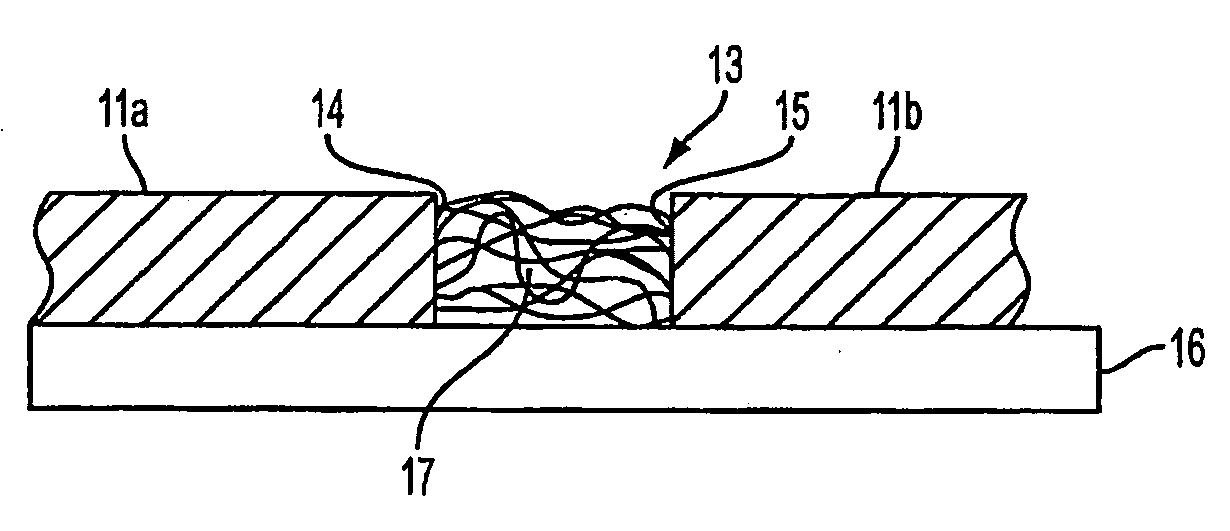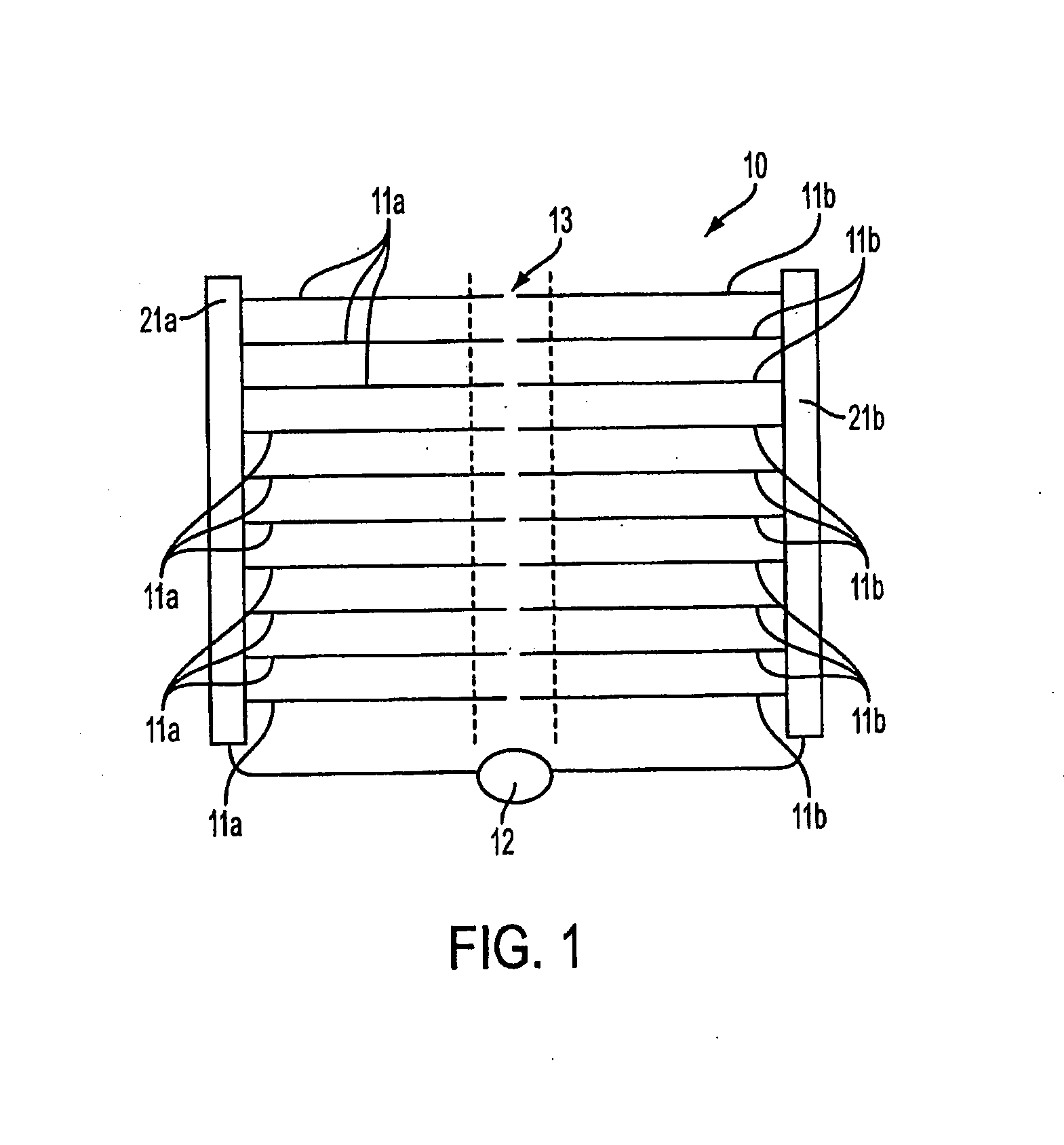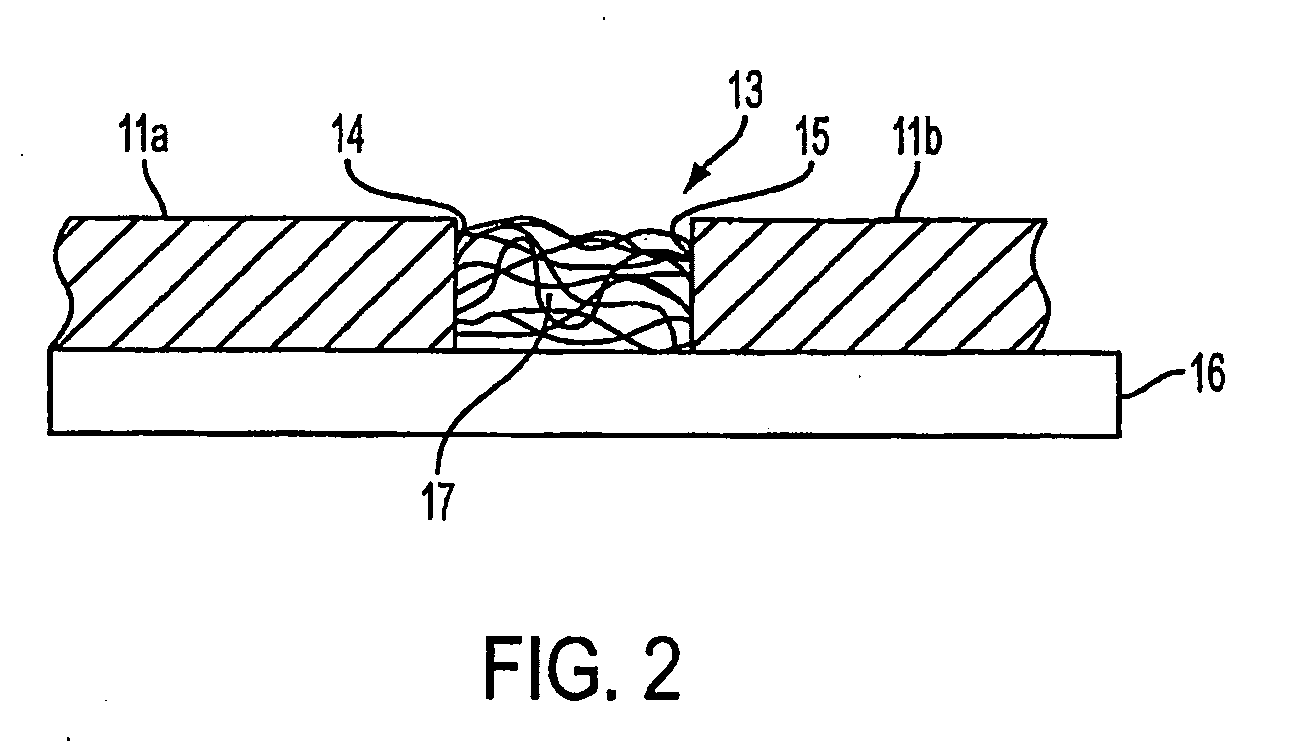Method for identifying compounds that affect a transport of a protein through menbrane trafficking pathway
a menbrane trafficking and compound technology, applied in the field of sensors, can solve the problems of limiting the yield of devices, the inability to sequentially develop resistive sensors, and the potential for further miniaturization, and achieves high-quality ohmic contacts, high controllability, and rapid exchange of a few microliters of solution
- Summary
- Abstract
- Description
- Claims
- Application Information
AI Technical Summary
Benefits of technology
Problems solved by technology
Method used
Image
Examples
example 1
[0036]In this example, we describe the use of electrochemical polymerization, at low and constant current levels, to fabricate, simultaneously and site-specifically, 10 conducting polymer nanoframework electrode junctions (CPNEJs; FIG. 1) in which a number of conducting polymer nanowires (CPNWs) of uniform diameter (for example, from about 40 nm to about 80 nm) intertwine to form nanoframeworks across a 2 μm gap between each pair of platinum (Pt) electrodes without the necessity of using any supporting template. In this example, the CPNWs are polyaniline nanowires. This example demonstrates that the present invention provides a highly efficient electrochemical process for the spontaneous and parallel fabrication of 10 CPNEJs in an array and that the resulting array can be used as a set of resistive junctions to demonstrate real-time electronic sensing in the gas phase and in solution.
[0037]For the fabrication of the CPNEJs, we applied a low-current electrochemical polymerization bas...
example 2
[0048]In this Example, we used the CPNEJ arrays made according to Example 1 as miniaturized resistive sensors for the real-time detection of NH3 (ammonia) and HCl (hydrogen chloride) gases and ethanol vapor. For all measurements in this example, which were performed at room temperature under ambient conditions using a Keithley 4200 semiconductor analyzer, a 0.1 V bias was applied across all of the CPNEJ's in the array and the change in resistance (log(R / R0)), where R is time-dependent resistance and R0 is the initial resistance, was monitored as a function of time. As a first part of this example, we demonstrated the detection of NH3. A CPNEJ array was first doped in 1.0 M aqueous HCl prior to measurement. We measured the real-time change in resistance of an HCl-doped CPNEJ array upon exposure to NH3 (100 ppm) dispersed in an ambient environment. We observed an increase in resistance by 1.2 orders of magnitude within 80 seconds as a result of the de-doping of polyaniline by NH3. Bec...
example 3
[0049]In this example, CPNEJ arrays made according to Example 1 were used to detect a variety of organic vapors, including ethanol, methanol, chloroform and acetone. Initially, we demonstrated the reversible and reproducible response of the CPNEJ array to saturated ethanol vapor. The resistance of the nanoframework increased upon exposure to saturated ethanol vapor, we attribute this increase in resistance to the effect of swelling of the polyaniline backbone caused by the ethanol vapor. The effects of humidity and temperature have noticeable inferences to the absolute conductances (less than 10%) of these CPNEJ array sensors. Although these effects are negligible compared to the analyte-induced conductance changes, they still cause some perturbations in the realistic applications. In order to eliminate these humidity- and temperature-induced perturbations, the real-time responses of these CPNEJ array sensors to gases and vapor were expressed in the form of relative changes (R / R0). ...
PUM
| Property | Measurement | Unit |
|---|---|---|
| heights | aaaaa | aaaaa |
| heights | aaaaa | aaaaa |
| height | aaaaa | aaaaa |
Abstract
Description
Claims
Application Information
 Login to View More
Login to View More - R&D
- Intellectual Property
- Life Sciences
- Materials
- Tech Scout
- Unparalleled Data Quality
- Higher Quality Content
- 60% Fewer Hallucinations
Browse by: Latest US Patents, China's latest patents, Technical Efficacy Thesaurus, Application Domain, Technology Topic, Popular Technical Reports.
© 2025 PatSnap. All rights reserved.Legal|Privacy policy|Modern Slavery Act Transparency Statement|Sitemap|About US| Contact US: help@patsnap.com



